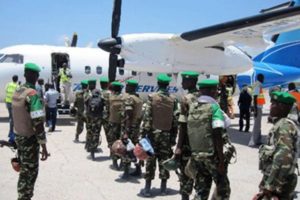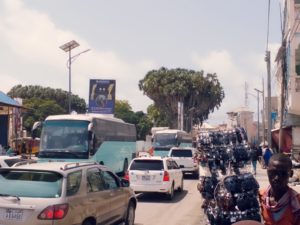Somalia’s economy and society are rising, like the proverbial Sphinx, from the ashes of civil war.
Mogadishu’s post-conflict economic recovery reflects a savoury mélange of government reforms, investments by Somalia’s new business elite, remittances by the diaspora and new groundswells of international goodwill and financial flows.
A new deal for Somalia is in the offing. On September 27, 2018 the European Union (EU) approved a 100 million euros ($116 million) in budget support to the Somali Government to be disbursed until 2021, for the first time in 27 years. The World Bank approved $80 million in grants to fund public finance reforms on September 26, 2018.
Earlier, on September 6, 2018, the Bank also unveiled the flagship infrastructure project, The Somali Urban Resilience Project (SURP), worth US$9 million, a test case for municipal infrastructure delivery. And in January 2018, the German Government allocated 23.4 million Euros to support the rehabilitation of urban infrastructure as part of a Multi Partner Fund.
On the sidelines of the recently concluded China-Africa Summit in Beijing on September 3-4, Somalia signed to China’s multibillion dollar Belt and Road Initiative (BRI). But Mogadishu’s road to recovery is steep. With a population of 15,181,925 (2018 estimates), and an income per capita of $226 by 2002 (compared to $515 in Sub-Saharan Africa), UNDP’s 2001 Human Development Index ranked Somalia 161 out of 163 countries, one of the poorest countries in the world.
Long before the civil war started in 1991, recurrent humanitarian disasters, a predatory Somali state and the effects of a drawn out popular struggle against Mohamed Siad Barre’s dictatorial regime (1969-1991) pushed the Somali economy to the ropes. In the ensuing civil war, Somalia became a haven of terrorist fighters, which ruined the economy, pushed entrepreneurs to exile and forced external financiers to cut ties with a thriving but criminal informal war economy, which financed warlords and extremists. As such, the EU and World Bank disbursements are the latest show of confidence in the government’s reforms and recovery plan.
But the future of Somalia is in the hands of the Somalis. In February last year, the Somali people elected a reformist government with a convincing reform agenda, anchored upon a strong partnership in Villa Somalia between President Mohamed Abdullahi Farmajo and Prime Minister Hassan Ali Khaire. Reforms are paying off. In the first quarter of 2018, the government raised $42.5 million domestically, the highest ever in a single quarter.




